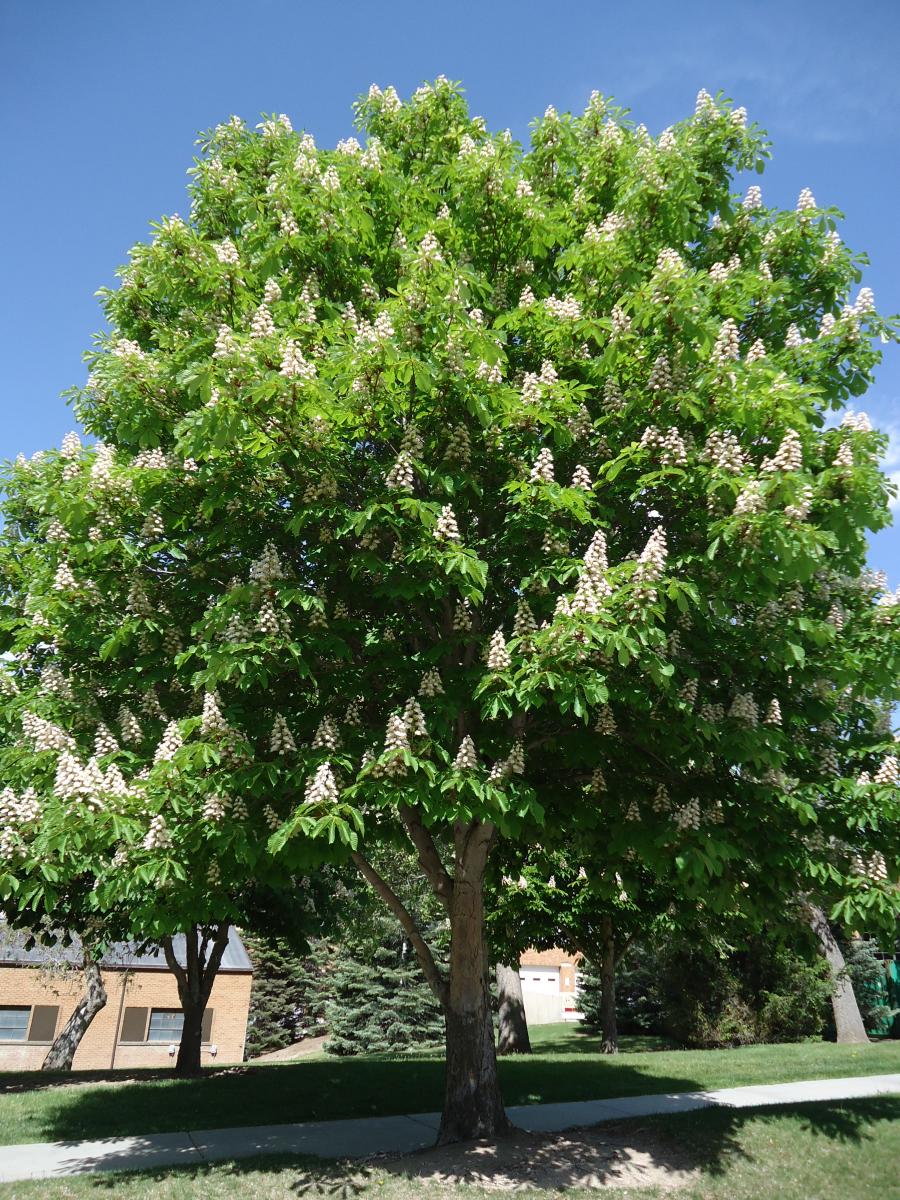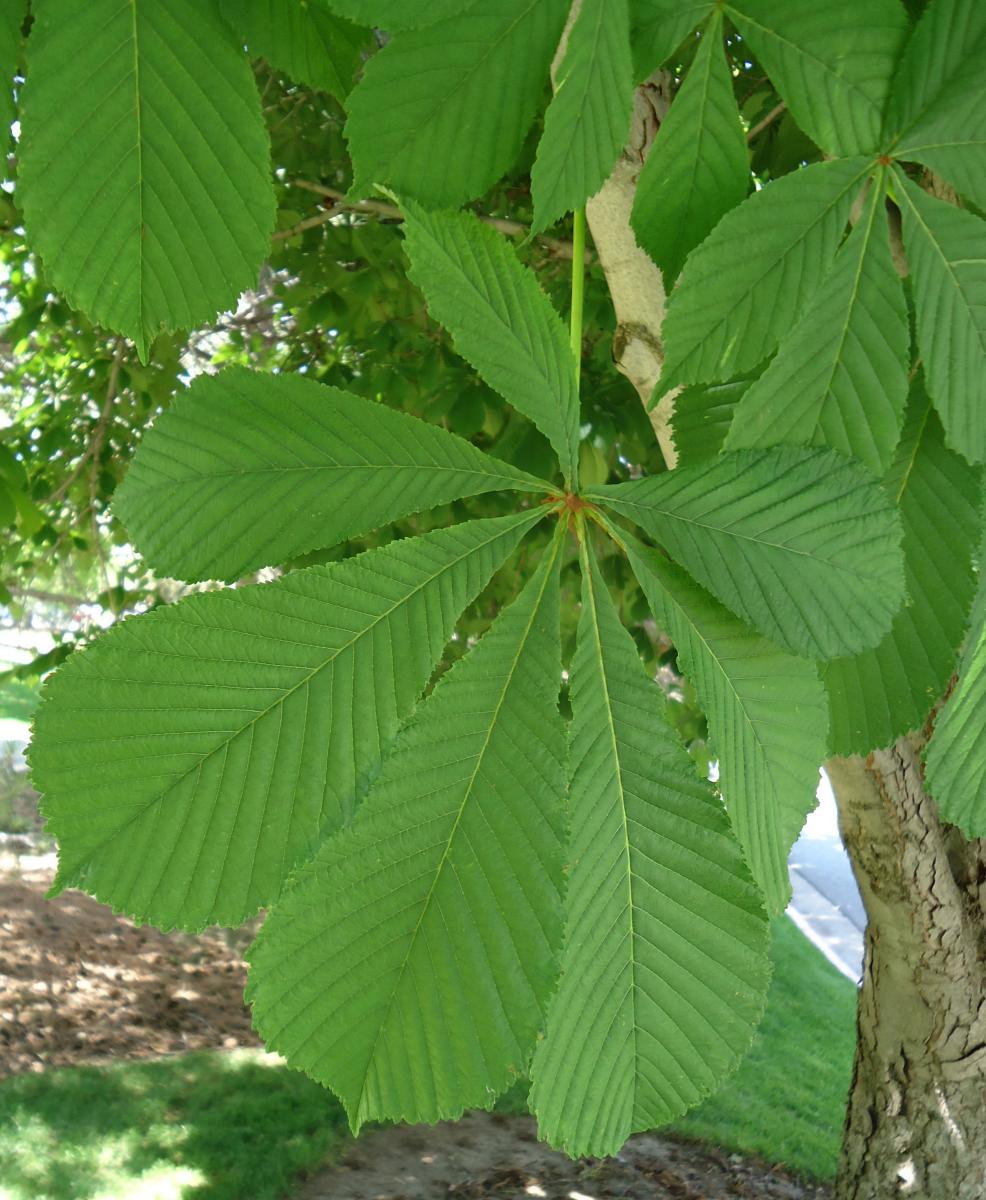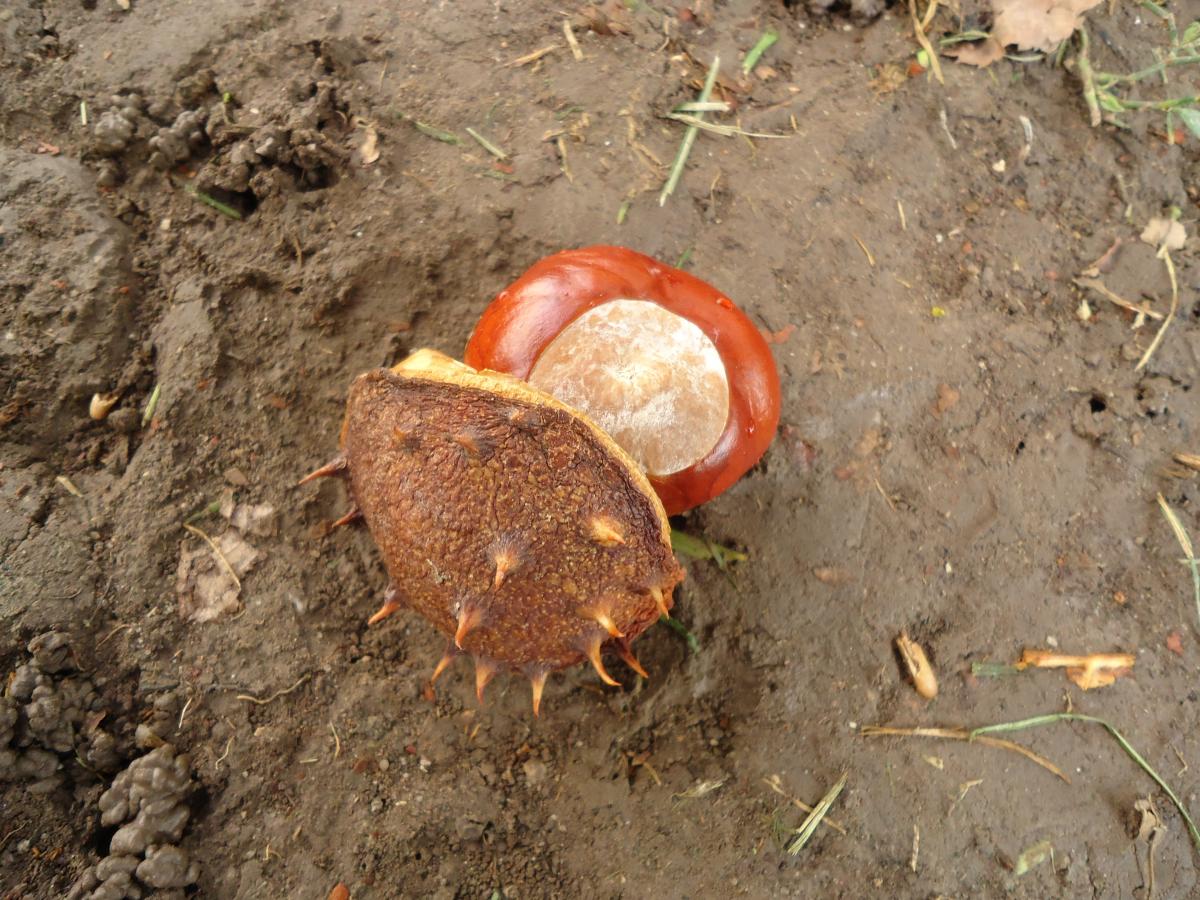European Horsechestnut










Aesculus hippocastanum
Leaves: Deciduous. Leaves are composed of 7 to 9 large leaflets, sometimes 5, spread out like the shape of a hand. Leaflets have jagged, double-toothed edges and are wider towards the point than the base, 5 to 7 inches long by 2 to 3 inches wide. Leaves are a deep, dark green. Fall color is usually a dull yellow to yellow-brown, not generally phenomenal.
Bark/Twigs: Dark gray to brown color. Bark becomes shallowly fissured into irregular plate-like scales and peeling on older stems. Large sticky buds.
Flowers/Fruit: Very showy flowers grow in long clusters 5 to 10 inches long and 2 to 4 inches wide. Individual flowers are a white to cream color with yellow or pink spots inside and about 1 to 1½ inches long. Blooms late spring (May). Fruit capsule is a 2 inch diameter prickly husk with 1 to 2 shiny brown seeds, that split open and drop in the fall (September to October).
Mature size and shape: Large. 50 feet high x 35 feet wide. Oval to round shape.
General information/special features: Plant in full sun to partial shade. Moist, well-drained, acidic soil is preferred. Not very drought tolerant.
Landscape use and maintenance: Large, good shade tree with dense summer foliage and spectacular spring flowers. Nice specimen tree for parks and other large spaces. Not recommended for small residential properties. Average growing rate. High maintenance with seeds and flowers. Prune early spring.
USDA Hardiness Zone: 3 to 8
Family/Origin: Hippocastanaceae – Buckeye. Native of Asia.
Campus Use: Somewhat common. Can be found south of the George Thomas Building (Bld 5).
